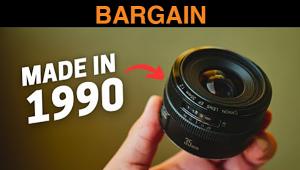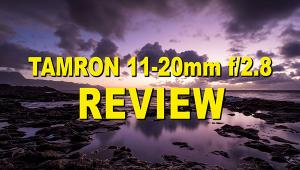Sigma’s APO 50-150mm f/2.8 EX DC HSM; A Portrait Photographer’s Zoom
 I 've been shooting most of my portrait work with a 28-75mm zoom, but always felt I could use something longer. And I'm about at the point where fixed focal length lenses just won't do; once you get used to the flexibility of a zoom, you're spoiled. I also like a fast lens with a relatively wide maximum aperture, as I like to get way out-of-focus backgrounds. And that's where the new Sigma 50-150mm f/2.8 lens comes in.
I 've been shooting most of my portrait work with a 28-75mm zoom, but always felt I could use something longer. And I'm about at the point where fixed focal length lenses just won't do; once you get used to the flexibility of a zoom, you're spoiled. I also like a fast lens with a relatively wide maximum aperture, as I like to get way out-of-focus backgrounds. And that's where the new Sigma 50-150mm f/2.8 lens comes in.
Like most lenses nowadays, this lens has lots of initials tagged onto its name. If you're reading this, you already know what 50-150mm f/2.8 means. I'll point out that the aperture remains constant at all focal lengths and focusing is internal, meaning the length never changes and the front doesn't rotate so your polarizer won't be doing cartwheels on the front of your lens. APO means aspheric-shaped elements, used to keep various color light rays coming from the same distance focused on the same plane. EX signifies special low dispersion glass, used to keep things nice and sharp and contrasty. And DC is something you need to pay attention to. This lens is specifically designed for digital cameras with the smaller sensors, not full frame sensors. Are digital lenses better than "regular" lenses on digital cameras? I can tell you from my own testing the short answer is yes, so if you're a professional shooting digital, and who isn't, invest in new lenses if you need them.
As someone who has practically abandoned tripods, I'm wearing the camera-lens combo on my neck several hours a day "in season" and weight is very important to me. It's one of the major reasons I don't own a 70-200mm f/2.8 lens, like everyone else I know. Case in point: The Sigma lens under test weighs 27.5 oz; the same company's new 70-200mm f/2.8 macro weighs 48 oz.
As to angle of view, figuring a factor of 1.5, the lens now works like a 75-225mm f/2.8 zoom--figure a bit more with a 1.6 factor. That gives me the long, fast zoom lens I want, at a fast speed. And while Sigma says this lens is aimed at the sports, nature, and fashion photographer, I'd say they should be right out there marketing this lens to portrait guys like me. Unless they come out with a 24-200mm f/2.8 lens that weighs 16 oz and costs $200 between now and July, I'll probably be buying this APO 50-150mm. It has "portrait photographer" written all over it.
 |
|
|
Well, now that I've had the nerve to tell Sigma what to do with their lens, let's see how it performed in the field. The weight and speed are wonderful and when you combine them with that HSM focusing, you feel like a ninja. It offered quick, quiet, and deadly focusing. I used the lens for portrait sessions in the studio (January in New Hampshire) and also trotted it out to a wrestling match I was assigned to photograph. I also did a few outdoor images.
 |
|
|
Portrait Work
Unless I'm going for an "extreme" effect by using a wide angle lens, I'll usually go for a longer lens because I like the perspective I get and the fact that I can keep some distance between me and my subject. (They usually don't like me if I photograph them an inch from their nose.) This is a piece of cake for this lens; the shortest length is a 75mm equivalent. But I did something else a little different from usual. I typically do my studio portraits at f/6.3. My studio isn't very big, so the distance from subject to background is about 3 ft. I'd like to have twice that since I really like my backgrounds out of focus.
 |
|
|
- Log in or register to post comments

















































